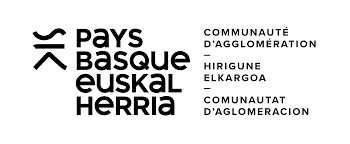CAPB & Topkapi's integrated report: ‘a benefit for the water industry’
Jean Daniel Urrutigaray, Head of the Automation Unit in the Water, Coastal and Natural Environment Department of the Communauté d'Agglo Pays Basque (CAPB), answers our questions about Topkapi's report module.
Could you tell us a little about your organisation and your relationship with Topkapi?
My department has dual responsibility for drinking water and wastewater. We are organised into several geographical sectors because of the size of our territory. It includes more than 158 municipalities. Across all the sectors, there are several Topkapi applications, which can be managed either in-house or as a delegated service. I've been in post since 2018 and I manage three of them, with around 380 connected PLCs.
What types of report are currently generated by Topkapi and what business needs do they address?
We have two types of report. Those that could be categorised as "regulatory":
- Our wastewater treatment business is subject to strict regulations. We need to produce a certain number of monthly reports on data from our wastewater treatment plants: running times, average consumption values, volumes entering and leaving the plants, etc. We declare all this information, for each plant, to the water authorities in the statutory SANDRE format.
- About the self-monitoring, we are still required to make declarations of water overflows in wet weather. In this way, we record the level of our water retention basins in both dry and wet weather to determine the volume of water potentially discharged.
And others focused on operations:
- In the wastewater treatment business, I have a sector where every morning the team arrives to find their Topkapi daily operating report printed out. This Excel-based report includes the previous day's operating times for lift stations, wastewater treatment plants, etc. Operators use it to detect and analyse anomalies. In other sectors, the teams prefer to look directly at the curves in Topkapi, which use the same calculation functions as the report module to format the raw data on the fly*.
- In the drinking water sector, we have sectorisation reports based on metering data. We also buy and sell water to the neighbouring SYDEC syndicate. We record flows and directions to produce reports that give us a clear view of returns and precise information on the volume of water sold or purchased.
In your opinion, what are the advantages of having a report module integrated into Topkapi?
We work with around twenty reports, all generated fromTopkapi's integrated module and based in most cases on customised Excel templates. We access them directly from Topkapi. There are no file-sharing or connection problems that we could imagine with a third-party tool. This is a real plus for us.
What's more, this integrated report module has all the functions we need, including the ability to perform calculations over specific periods. Finally, the calculation functions used by the report module to generate our Excel reports are also available in Topkapi's curves module. In operation, rather than displaying raw data, we format it by aggregating it with the available calculation functions, enabling us to quickly detect anomalies, for example.
What do you think of the latest developments in the report module, and more specifically on the Dataviz module?
We use Topkapi software on a daily basis, so we've always kept a close eye on its development. When we upgraded to version 6.2, I appreciated the following changes of the report module:
- I think that the ergonomic changes have made the module easier to use and more intuitive to navigate.
- I've also noticed that it's possible to set report parameters from any user workstation. This meets an internal need we had: to give some of operator colleagues a hand in making changes into their reports.
Finally, I'm particularly interested in using the Dataviz module, which is why I've already taken the training offered by AREAL. However, it requires us to take the time to think about the KPIs we want to use in our dashboards. Nevertheless, I'm convinced that this is something that needs to be set up.
*On the fly: calculations are made when the data is displayed, with no need to store the aggregated data in Topkapi.



